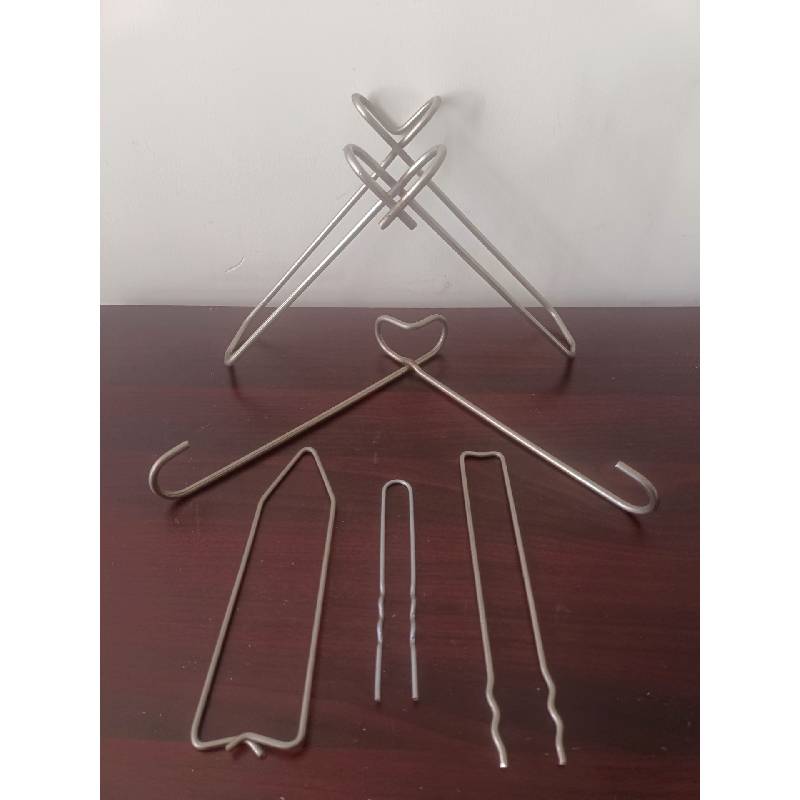
- Mobile Phone
- +8613931874955
- sales@cntcmetal.com
cavity wall ties
Understanding Cavity Wall Ties A Comprehensive Guide
Cavity wall ties play an essential role in constructing modern buildings, particularly those with cavity wall systems. These walls have become popular due to their thermal efficiency and damp resistance. Understanding the function, types, installation, and importance of cavity wall ties can help architects, builders, and homeowners appreciate their role in structural integrity and safety.
What Are Cavity Wall Ties?
Cavity wall ties are metal connectors used to link the two leaves of a cavity wall—typically, an outer leaf made of brick or block and an inner leaf of blocks or concrete. They help maintain the strength and stability of the wall structure by resisting lateral forces, such as wind loads, while allowing for some movement between the outer and inner leaves.
Importance of Cavity Wall Ties
The primary function of cavity wall ties is to provide structural integrity to cavity walls. They resist water penetration by allowing the outer leaf to drain while maintaining a physical connection to the inner leaf, thus improving the overall durability of the structure. Additionally, cavity wall ties help minimize the risk of air leakage and enhance insulation performance, contributing to overall energy efficiency.
Furthermore, proper installation of ties is crucial for preventing issues such as bulging or cracking in cavity walls. When ties are incorrectly spaced or corroded, the structural integrity of the wall can be compromised, leading to potential safety hazards.
Types of Cavity Wall Ties
Cavity wall ties come in several types, selected based on the design requirements of the building
. Some common types include1. Stainless Steel Ties These are the most common type due to their resistance to corrosion. Stainless steel ties are ideal for areas exposed to moisture and are often used in coastal locations.
2. Galvanized Steel Ties Galvanized ties are coated with zinc to prevent rusting, though they are less durable than stainless steel. They are suitable for many applications, particularly in less aggressive environments.
3. Polypropylene Ties For energy-efficient buildings, some builders opt for non-metallic polypropylene ties, which provide excellent thermal performance and reduce the risk of thermal bridging.
cavity wall ties

4. Bimetallic Ties These ties combine different metals to enhance performance and durability, particularly in harsh environments.
Installation Guidelines
When installing cavity wall ties, it is vital to follow specific guidelines to ensure their effectiveness
1. Spacing The spacing of ties is crucial for effective load distribution. Generally, ties should be installed every 600 mm vertically and 900 mm horizontally, though local building codes may dictate tighter spacing.
2. Embedment Ties should be adequately embedded in both the outer and inner leaves of the wall. Typically, at least 50 mm of tie should be embedded in each leaf.
3. Alignment Ties must be installed in a level manner to avoid any uneven pressure on the wall components.
4. Materials Choosing the right material based on environmental conditions is essential. Stainless steel is often preferred for its longevity in damp conditions.
Maintenance and Inspections
Regular maintenance and inspections are crucial for ensuring the longevity and effectiveness of cavity wall ties. Inspections should focus on
- Corrosion Checking for signs of rust or corrosion, particularly in galvanized ties. - Visual Damage Looking for cracks or bulging in the walls, which may indicate tie failure. - Water Ingress Assessing for any signs of moisture penetrating the cavity, which may suggest improper drainage or tie failure.
Conclusion
Cavity wall ties are an integral component of modern building design, providing essential structural support and improving energy efficiency. By understanding the importance of these elements, builders and homeowners can ensure that their cavity wall systems remain robust and effective for years to come. Proper installation, material selection, and regular maintenance are key to maximizing the benefits of cavity wall ties and maintaining the integrity of cavity walls.
share:
-
Why Sacrificial Formwork Is Redefining Underground ConstructionNewsJun.06,2025
-
The Structural Dynamics of Modern Concrete: How Snake Spacers Revolutionize Flexible ReinforcementNewsJun.06,2025
-
Snake Spacers Smart-Lock Concrete Reinforcement with Surgical PrecisionNewsJun.06,2025
-
Snake Spacers: Reinforcement Precision for Modern Concrete ProjectsNewsJun.06,2025
-
Snake Spacers Powering Concrete's Structural DNANewsJun.06,2025
-
Slither into Success: Snake Spacers' Precision Bite for Unbreakable ReinforcementNewsJun.06,2025
-
Sacrificial Formwork: Building Stronger, Faster, and Safer StructuresNewsJun.06,2025



















